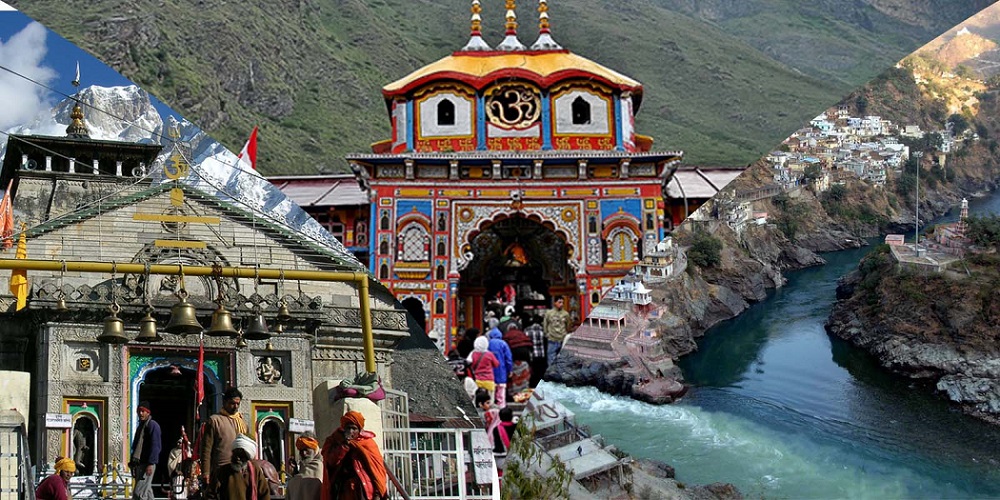The Panch Badri Circuit in Devbhoomi (Uttarakhand) is a combination of both a spiritual sojourn and an expedition of visionary treat. As the name refers, the circuit of Panch Badri comprises five temples - Vishal Badri, Yogdhyan Badri, Bhavisya Bari, Vridh Badri and Adi Badri. All of these shrines are the holy abode of Lord Vishnu, Vishal Badri, being the most popular and a part of Char Dham Yatra. Going by the Vaishnavite traditions, a spiritual journey to Panch Badri is of great spiritual significance. Each of the temples of Panch Badri is associated with respective legends, history, and mythological stories.
The Shrines of Panch Badri where Lord Vishnu Resides
Vishal Badri
Vishal Badri, also known as Badri Narayan, is the revered deity worshipped at Badrinath Dham, a sacred pilgrimage site dedicated to Lord Vishnu. According to legend, this divine idol was unearthed from the depths of Narad Kund by Adi Guru Shankaracharya and enshrined in the Badrinath temple. As one of the 'Panch Badris' and part of the Char Dham Pilgrimage, the temple holds immense significance among Vaishnavites, being one of the 108 auspicious Divya Desams. Perched at an altitude of approximately 3133 meters in Uttarakhand's Chamoli district, the temple complex features 15 divine idols of Lord Vishnu, each meticulously crafted from glossy black stones. Constructed nearly two centuries ago by the Garhwal Kings, the present Badrinath temple proudly stands as a majestic conical structure. The shrine is an entity of timeless devotion and spiritual sanctity.
Yogdhyan Badri
Located in Pandukeshwar village, approximately 24 km from Joshimath near Hanuman Chatti and Govind Ghat, Yogdhyan Badri is a revered temple dedicated to Lord Vishnu. It is known for its tranquil ambiance and association with meditation, reflected in its name, "Yogdhyan." Believed to be as ancient as the renowned Badrinath temple, Yogdhyan Badri holds a significant place in Hindu mythology. According to legend, the Pandava brothers, after relinquishing their kingdom to Raja Parikshit, chose Yogdhyan Badri as their retreat for meditation. Similarly, King Pandu, their father, is said to have spent his final days here in deep penance. The temple's historical significance is further highlighted by the discovery of ancient copper plates containing inscriptions, shedding light on its origins and the early reign of the Katyuri kings in the region.
Bhavisya Bari
Located near Joshimath in the Chamoli district, there is a place that is believed to be the future Badrinath. According to the legend, when evil spreads across the world, the Nar and Narayan mountains will be blocked, and Badrinath will become inaccessible. The deity worshipped at this place is Lord Vishnu in the form of Narasimha. Since there are no roads leading to the temple, the only way to get there is by foot. Additionally, the temple remains closed during winter and opens only when the Badrinath temple does.
Vridha Badri
Located at an altitude of 1,380 metres, Vridha Badri, also known as "Old Badri," is the fourth temple in the circuit and is relatively lesser known compared to others in the region. According to legend, Lord Vishnu left his image in the form of a stone at Vridha Badri when he moved from Badrinath to Kedarnath. Estimated to be around 5000 years old, the temple is believed to have been constructed by the Pandavas during their exile. Architecturally, the temple is a marvel, constructed primarily of stone with a conical roof and small sanctum sanctorum (garbha-griha) housing the idol of Lord Vishnu, sculpted from black stone and standing approximately 1.5 feet tall. Additionally, the temple features a small water tank believed to be the source of the Alaknanda River.
Adi Badri
Situated along the Karnaprayag-Ranikhet road, Adi Badri comprises approximately 16 temples, all tracing their origins back to the Gupta dynasty era. Among these, the Narayan temple stands out, housing a notable idol of Lord Vishnu crafted from black stone, standing nearly 3 feet tall. Legend has it that Adi Guru Shankaracharya laid the foundation stone of these temples, adding to their historical significance.


